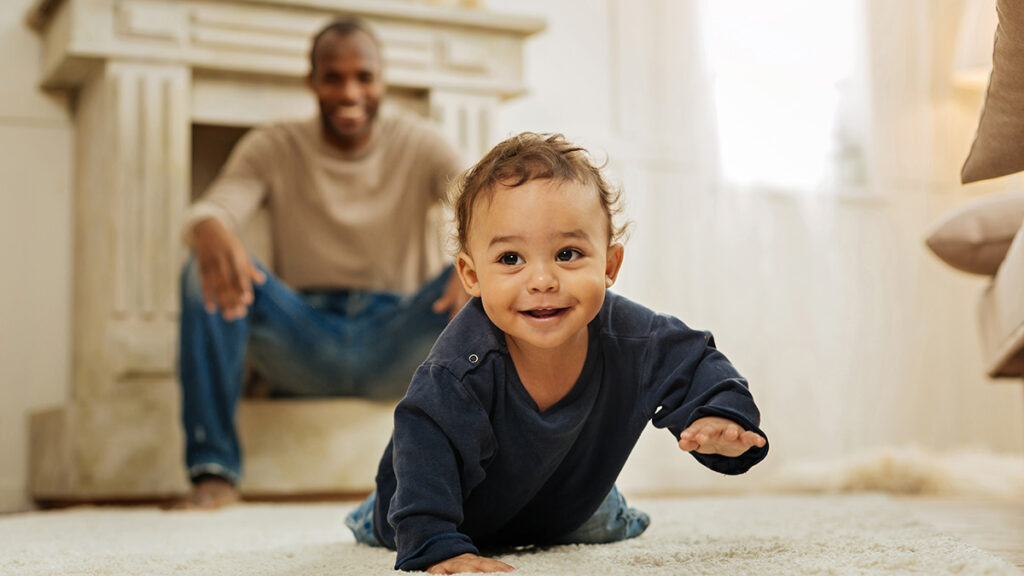Some babies are born with full heads of hair. Others have a smattering of strands, and many others have only peach fuzz. However full or sparse your newborn’s hair is, you might notice it falling out or getting thinner in the weeks after you bring them home. This shedding may come as a surprise. But the good news is: there’s no reason to worry.
Here’s the thing: Infant hair loss is prevalent. Natural hormonal shifts and common sleeping positions can contribute to baby hair loss. Learn more about why this may be happening.
Four reasons why your baby’s hair is falling off
1. Telogen effluvium
Your baby is born with all the hair follicles they’ll ever have. A hair follicle is part of the skin from which hair strands grow. At birth, some of the follicles are typically in the resting phase (called the telogen phase), and others are in a growing phase (anagen phase).
But certain factors can accelerate the telogen phase, causing hair to shed: enter hormones. The same hormones also pulsed through your baby’s body thanks to the umbilical cord. But after birth, those hormones drop, triggering hair loss in your baby and yourself.
2. Friction
Your baby may lose hair on the back of the scalp due to hair rubbing against the hard surfaces of crib mattresses, strollers, and playpens. (Experts recommend placing babies on their backs to sleep to reduce the risk of sudden infant death syndrome, or S.I.D.S.)
Hair loss of this nature is called neonatal occipital alopecia or friction alopecia. These hair-thinned patches will start to fill in when babies can roll over. This usually happens by the end of the seventh month.
A 2011 study looked at neonatal occipital alopecia and suggested another explanation. Researchers theorised that infant hair loss isn’t something that occurs outside the womb but a physiological event that starts before birth.
3. Cradle cap
Your baby’s crowning glory is studded with crusty, scaly, sometimes oily patches of what looks like hardened dandruff. It’s called cradle crap — er, cradle cap. Doctors aren’t exactly sure what causes it, but many suspect yeast or hormonal changes that make the scalp produce more oil.
Either way, the condition isn’t painful, itchy, or contagious. It also doesn’t cause hair loss, per se — but in an attempt to remove the stubborn scales, you may inadvertently also take out some hair strands. Most mild cases of cradle cap resolve on their own in a few weeks, though it can persist for as long as a few months (and still be normal and harmless).
4. Ringworm
Call off the exterminators! Ringworm (also called tinea capital ) isn’t caused by worms but by various fungi. It may cause hair loss, and a red, scaly, ring-like rash is often seen on the scalp.
According to the doctors at Children’s National in Washington, D.C., ringworm doesn’t usually infect children under age 2. But it’s highly contagious, so if one person in the household has it, it’s possible to spread it via shared hats and hair brushes. Please visit your doctor quickly if your baby’s hair is falling off too rapidly.

